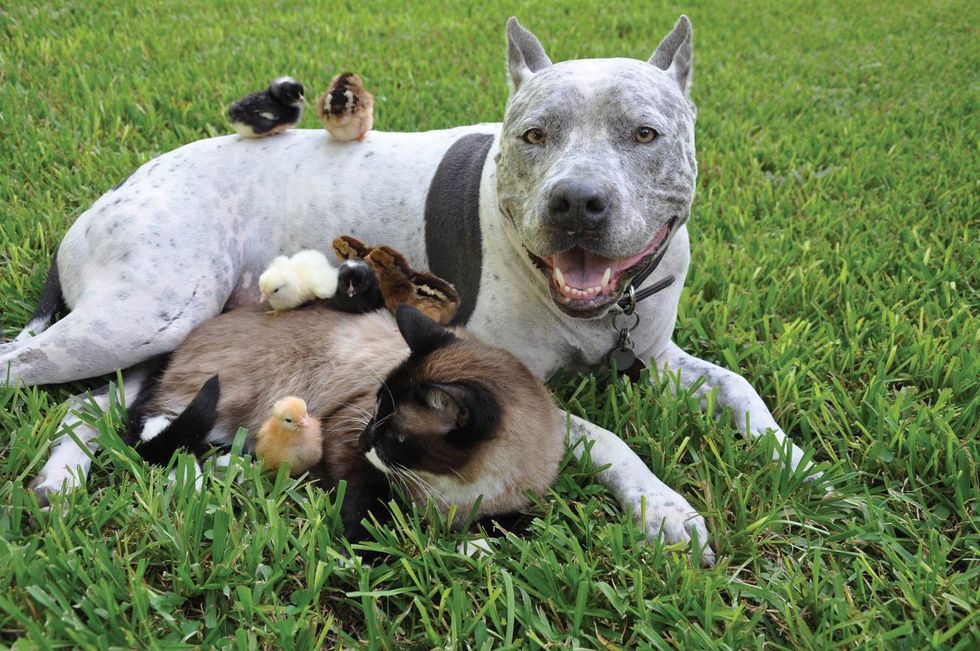One of the most common and detrimental mistakes made by pet owners is failing to socialize their dog or cat at an early age. Many difficult visits to the veterinary clinic along with problematic interactions with other pets or strangers could have been easily prevented with socialization. when an owner deprives their pet of interactions with strangers and other animals while they are young, consequences that are hard to reverse and correct arise.
While most people recognize and notice the behavioral problems of poorly-socialized dogs, the vast physiological processes that occur due to not being socialized can lead to many health complications in the future. When dogs are introduced to stressful or unfamiliar stimuli, they often become fearful and thus release adrenalin and corticosteroid hormones from the adrenal gland as a neurological response, increasing their heart rate and blood pressure.
Although moderate amounts of stress is actually beneficial for good health, often secretion of these hormones into the bloodstream is not. Excess corticosteroid hormones belonging to the glucocorticoid group in the bloodstream can decrease blood flow to the kidneys, breakdown muscle, and suppress the immune system.
When cats and dogs become frightened, they either fight or flight, which both makes for an unnecessarily hard veterinary exam. There is nothing easy about holding a fleeing dog, especially when it is a 130-pound bull mastiff, just like there is nothing smooth about dealing with an aggressive chihuahua. Had the bull mastiff or chihuahua been socialized when they were young, circumstances involving strangers would not be nearly as stressful for both the dog and the veterinarian/veterinary technician.
Along with stressfulness, veterinary exams can also be inaccurate or incomplete due to poorly socialized pets. Drawing blood from a 15-pound cat that is extremely reluctant of being handled by strangers is just as difficult, if not more, as drawing blood from the also-reluctant 130-pound bull mastiff from earlier.
With no blood sample, we are unable to assess major organ functions and test for several conditions such as feline leukemia, feline aids, heartworm, and more. Even if blood is not needed for a particular visit, holding an overly-stimulated cat or dog for the veterinarian to effectively listen to the heart and lungs and palpate the abdomen and joints is rather difficult if not impossible.
Even if the veterinarian is able to hold the stethoscope still in the same location, the heart rate will be elevated and will not demonstrate a normal pulse. On top of that, when a muzzle is required for an overly-aggressive animal, examination of the gums in order to determine dental health is out of the question.
Besides giving the staff of the veterinary clinic a hard time, poorly-socialized dogs do not make a vet trip any easier for the other pets in the lobby or checkout line. When dogs who are not used to interacting with other dogs or animals encounter one, they tend to either scurry away or become aggressive and display a loud show of continuous barking and growling which usually makes all of the other patients stressed out. Poorly-socialized cats on the other hand, usually do not cause any problems with other animals at the clinic because they tend to be in a carrier, but have fun getting that cat out of it.
Outside of the veterinary clinic, poorly-socialized dogs and cats can cause quite the damage to house guests, playful children, or other pets. Places you can take your dog will be very limited even with a leash on, and activities you can partake with your dog will be selective. In order to have that playful dog that everyone admires and takes videos of, or that cuddly cat, it is necessary that you introduce them to many different strangers and animals throughout their youth.









































